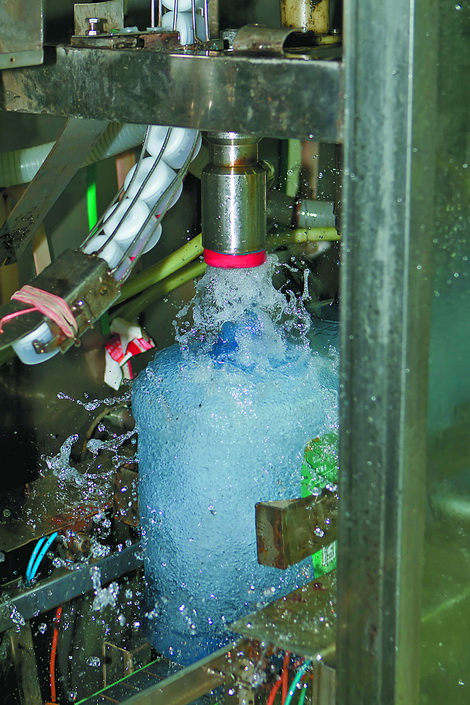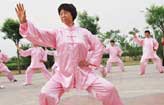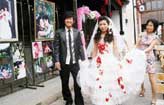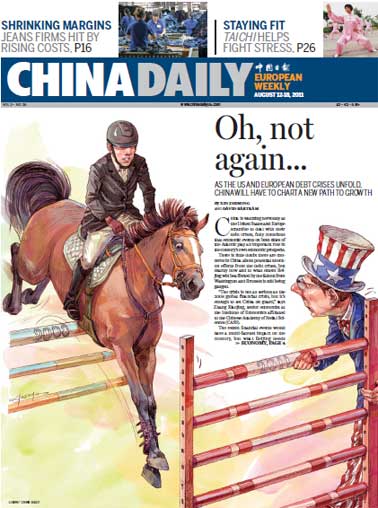Economy
Questions remain over safety of bottled water
Updated: 2011-08-16 09:24
By Wu Wencong (China Daily)
The containers
|
 A product line of bottled water at Beijing Kangtal Gaoke.[Photo/China Daily]
|
Then there is the quality of the containers. Standards for individual-size water bottles are lower because those bottles are not reused. But the big jugs, usually holding 18.9 liters, are usually reused about 40 times each.
These bottles are supposed to be made of food-grade polycarbonate. Statistics released by the China National Health Association drinking healthy committee indicate the annual nationwide output is about 15 million; demand exceeds 20 million.
Li said it is no secret in the industry that about half of these large bottles do not meet appropriate standards.
While doing research in Hebei province, Li said, he saw workers from small illegal workhouses smash waste DVDs and small plastic bottles into granules and sell them to factories that make the big water bottles.
"Water is contaminated if it is kept in vessels like this. People may feel a stomachache or get dizzy if they drink this water for a long time," Li said.
"Price competition is hot in the industry, and the bottles account for the biggest portion of the total cost." Li said bottles that meet standards cost at least 30 yuan.
Forged bottles are hard to identify, Li said, even by professionals.
If you lift a standard bottle and a substandard one together against the sun, he said, it's clear that the "good" bottle is a transparent light blue, with no impurities. The substandard bottle is darker and rougher, with low transparency and more scratches.
When such a comparison isn't possible, Li said, it's hard to make a distinction.
Distribution
The biggest risks occur after the filled bottles leave the production plant.
Few companies in the industry have retail operations. Instead they rely on dealers and distributors to sell and deliver their water, and that's when they lose control of their products.
"Some distributors simply pump tap water into the bottles that are labeled as famous brands. Some replace qualified bottles with substandard ones," Li said. "The authorities care most about the producers. There is hardly any supervision in this segment."
Even when the water reaches the customer, risks remain.
The large jugs require the use of a water dispenser. Li said many people think the dispensers are convenient and safe but don't think to clean them often enough. They also should consume the water within a week, he said.
"What they usually don't know," he said, "is that once the barrel is loaded onto the dispenser, air and dust start to come inside, making it a comfortable reproduction site for germs."
Air has to be introduced into the barrel to allow water to drop into the dispenser. That's the process that produces the large, sometimes loud bubbling.
Li and his colleagues once performed an experiment that produced countless bacterial colonies in the water within four days.
"Once the seal is opened, the water must be stored in a place with no direct sunshine and be finished within a week," Li said. "And the dispenser should be cleaned at least every month."
Despite all the potential risks, Li said, water from the 18.9-liter bottles is a safer choice than tap water and water from the automated sellers installed outside many communities. But he urged consumers to learn more about drinking water.
"The quality of life is determined by the quality of water," Li said.
E-paper

Going with the flow
White-collar workers find a traditional exercise helps them with the frustrations of city life
The light touch
Long way to go
Outdoor success
Specials

Star journalist remembered
Friends, colleagues attended a memorial service to pay tribute to veteran reporter Li Xing in US.

Robots seen as employer-friendly
Robots are not new to industrial manufacturing. They have been in use since the 1960s.

A prosperous future
Wedding website hopes to lure chinese couples
